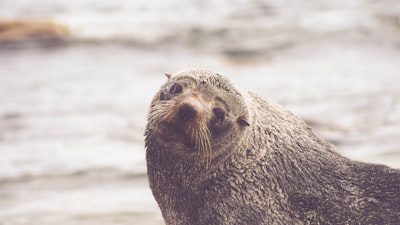
In a rare and alarming discovery, conservationists in South Africa have confirmed that a new predator has entered the already dangerous world of the critically endangered African penguin. For the first time, a Cape clawless otter has been documented actively hunting and killing these vulnerable seabirds in a mainland colony. This unprecedented behavior sheds light on emerging threats to a species already battling severe population declines.
The African penguin (Spheniscus demersus) has long faced a multitude of natural and human-induced dangers. At sea, they must evade aggressive predators like sharks, Cape fur seals, and gulls. On land, their eggs and chicks are at risk from caracals, mongooses, domestic dogs, and even leopards. Traditionally, these penguins nested on offshore islands, which offered natural protection from many of these terrestrial predators. However, the landscape of their habitat has dramatically changed.
In recent years, driven by both ecological changes and pressures from human development, African penguins have increasingly established breeding colonies along the mainland coastlines of South Africa and Namibia. One of the most notable of these colonies is located in Simon’s Town, a coastal town near Cape Town. While these locations provide new nesting grounds, they also expose the penguins to threats from predators that they once managed to avoid.
Between 2020 and 2023, the breeding population of African penguins at the Simon’s Town colony dropped from 1,100 pairs to just 870, raising alarms among conservationists and local wildlife authorities. While several factors are likely contributing to this decline—including food scarcity, climate change, and human disturbance—new evidence suggests that predation by Cape clawless otters may be an overlooked and growing concern.
The Cape clawless otter (Aonyx capensis) is typically known for its diet of fish, frogs, and crustaceans. These semi-aquatic mammals are rarely considered a threat to birds as large as penguins. But in September 2022, wildlife monitors began noticing otters moving near the penguin nesting sites in Simon’s Town. Around the same time, seven dead penguins were found in the area, but the cause of death remained unclear.
Everything changed in March 2023. Conservation officials observed — and photographed — a female otter attacking African penguins. During this incident, two adult penguins were rescued, and the bodies of three others were recovered for examination. The dead birds were sent to the Southern African Foundation for the Conservation of Coastal Birds (SANCCOB), where detailed autopsies were performed.
Thanks to visual confirmation of the predator, SANCCOB researchers were able to conduct a forensic analysis of the penguin carcasses. This allowed them to establish distinctive wound patterns and injuries that could now be attributed specifically to otter attacks. By documenting the size, location, and nature of the injuries, scientists developed criteria to help differentiate between predation by otters and other species such as caracals or dogs.
“This development significantly improves our ability to identify the specific threats facing African penguins at mainland colonies,” said one researcher involved in the project. “We can now begin to assess how frequently such predation occurs and whether it is an isolated incident or part of a growing trend.”
This discovery adds a new dimension to the already complex efforts to protect African penguins. As the species continues its shift toward mainland habitats, it becomes increasingly vulnerable to land-based predators. While otter attacks may not yet represent a primary cause of death for penguins, their emergence as a confirmed threat underscores the importance of comprehensive monitoring and adaptive conservation strategies.
Authorities are now considering additional protective measures at vulnerable nesting sites. These may include improved fencing, active patrols, and increased surveillance through motion-sensitive cameras. However, conservationists caution that any intervention must also consider the natural behavior and conservation status of otters, which are themselves protected in many parts of South Africa.
Penguins and otters both occupy critical roles in their ecosystems. This interaction, although surprising, is a reflection of how shifting habitats and human influence can reshape predator-prey relationships. With African penguin numbers already dangerously low, any additional source of mortality — even if rare — is cause for concern.
Experts agree that a multifaceted approach is essential. Protecting penguin populations will require addressing not just predation, but also issues like overfishing, oil spills, habitat destruction, and the broader impacts of climate change. The appearance of otters as new predators adds another variable to a conservation equation that is becoming increasingly urgent and complex.
The revelation that Cape clawless otters are preying on African penguins for the first time on record is a stark reminder of the fragile balance in South Africa’s coastal ecosystems. As both species navigate a rapidly changing environment, their unexpected interaction reveals the need for heightened vigilance and science-driven conservation practices.
Efforts to save the African penguin must now account for previously unconsidered risks. This includes monitoring emerging predator behavior, strengthening colony protections, and educating the public about the intricate connections between species. If we hope to preserve these iconic seabirds for future generations, conservation strategies must evolve as fast as the challenges they face.
for more news please visit our website africapulsemedia.com